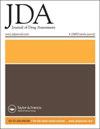Impact of ambulatory clinical pharmacist interventions on outcomes in the HIV population
IF 2.4
引用次数: 0
Abstract
Abstract Background: Previous studies have demonstrated the benefit of clinical pharmacist intervention in the care of patients with human immunodeficiency virus (HIV) in an ambulatory care setting. Patients who receive interprofessional care that includes a clinical pharmacist are more likely to see clinical benefit including improved adherence and reduced HIV viral load. With recent improvements in virologic testing and HIV medications, it is useful to identify which types of pharmacist interventions are significantly improving clinical outcomes in the most difficult-to-treat patients. Aims: Determine the impact of clinical pharmacy interventions and specialty pharmacy involvement in an uncontrolled HIV population. Methods: HIV patients with a detectable HIV viral load (>20 copies/mL) were retrospectively included in the study if they had at least one visit with a clinical pharmacist and at least one follow-up HIV viral load documented after the visit between January 1, 2017 and March 1, 2019. Patient charts were reviewed to obtain information regarding HIV history, relevant interventions made by the clinical pharmacist, and adherence rates. The primary outcome was the proportion of patients who achieved an undetectable viral load (<20 copies/mL) after seeing a pharmacist in clinic. Secondary outcomes included types of pharmacist interventions, and specialty pharmacy capture rate. Results: Fifty-one patients were included in the primary analysis. The median baseline viral load was 22,900 copies/mL and 68.6% of patients were able to achieve an undetectable HIV viral load after meeting with a pharmacist. The most common pharmacist intervention was compliance counseling, followed by medication change and medication initiation. In this cohort where 30% of patients were uninsured and unable to fill medications at the associated specialty pharmacy, the specialty pharmacy capture rate was 39%. Conclusions: The clinical pharmacists within the Regional Center for Infectious Disease care for a large proportion of the clinic’s difficult-to-treat HIV patients with uncontrolled viral loads. Within this population, patients whose care included clinical pharmacist interventions were able to achieve an undetectable viral load more than two-thirds of the time. Clinical pharmacists are also uniquely positioned to encourage utilization of specialty pharmacies to improve delivery and adherence. Utilization of skilled pharmacists will be vitally important in achieving new viral suppression rate targets, particularly within difficult-to-treat patient populations.门诊临床药师干预对HIV人群预后的影响
背景:先前的研究已经证明临床药师干预在门诊护理中对人类免疫缺陷病毒(HIV)患者的护理是有益的。接受包括临床药师在内的跨专业护理的患者更有可能看到临床益处,包括改善依从性和降低艾滋病毒载量。随着最近病毒学检测和HIV药物的改进,确定哪些类型的药剂师干预措施显著改善了最难治疗患者的临床结果是有用的。目的:确定临床药学干预和专业药学介入对未控制HIV人群的影响。方法:在2017年1月1日至2019年3月1日期间,如果可检测到HIV病毒载量(bbb20拷贝/mL)的HIV患者至少有一次与临床药剂师就诊并在就诊后至少有一次随访记录HIV病毒载量,则回顾性地将其纳入研究。我们回顾了患者的病历,以获得有关HIV病史、临床药师的相关干预措施和依从率的信息。主要结局是在诊所见过药剂师后达到不可检测病毒载量(<20拷贝/mL)的患者比例。次要结局包括药师干预类型和专科药房捕获率。结果:51例患者纳入初步分析。中位基线病毒载量为22,900拷贝/mL, 68.6%的患者在与药剂师会面后能够达到不可检测的HIV病毒载量。最常见的药剂师干预是依从性咨询,其次是药物改变和药物开始。在这个队列中,30%的患者没有保险,无法在相关的专业药房配药,专业药房的捕获率为39%。结论:区域传染病中心的临床药师护理了很大比例的临床难治性HIV患者,这些患者的病毒载量无法控制。在这一人群中,患者的护理包括临床药师干预能够达到检测不到的病毒载量超过三分之二的时间。临床药师也有独特的定位,鼓励利用专业药房,以提高交付和依从性。利用熟练的药剂师将是至关重要的,在实现新的病毒抑制率目标,特别是在难以治疗的患者群体。
本文章由计算机程序翻译,如有差异,请以英文原文为准。
求助全文
约1分钟内获得全文
求助全文

 求助内容:
求助内容: 应助结果提醒方式:
应助结果提醒方式:


